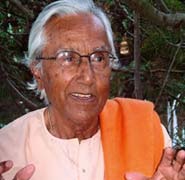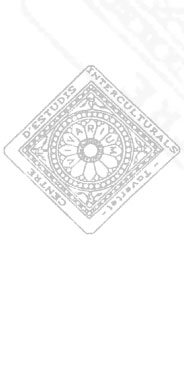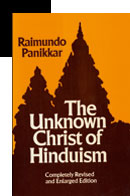

site officiel


The unknown Christ of Hinduism
Like the great Japanese master Dôgen, Panikkar also seems to have a propensity for taking up the writing of his previous works from the beginning. This is the case of his thesis in theology which was written in 1961 and published in London in 1964 which he then resumed at several stages with revised and transformed editions in various languages, of which this is the most recent. In any case the relationship between Christianity and Hinduism is a fundamental theme in the research and experience of his lifetime to which he has dedicated many other works which bear witness to an experiential exploration. Because «I can only be free of a certain Christianity or Hinduism (and the same goes for a certain type of Buddhism or secularity) by striving to be a better Christian or a better Hindu and a better citizen of the world ». A book written “with my own life and my own blood”.
The history of the title is illuminating. Originally it was intended to be a sub-title, but on the suggestion of Bede Griffiths the expression “the unknown Christ of Hinduism” became central because the intra-religious experience and knowledge which it expresses is central: «the most positive way to overcome a tradition does not consist in leaving it behind as if it were just any kind of association, but rather in living out the said tradition more deeply (authentically), that is to “transmit it”, and thus transform it …». So this is the transformational dynamic inherent in the open relationship between a traditum and a tradendum.
The central theme of this volume is in fact an intra-religious and Christian reflection, asking the question of whether to be Christians one must at all costs be spiritually Semitic and intellectually Greek. And this just to be Christians, note. Moreover it is by no means certain that humanity has left behind its infantile conception of the relationship between its own religion and that of the others, meaning that one considers one’s own religion to be the only true one and all others to be false; this applies to Christians as well. So here is Pannikar’s testimony Christian through and through, in a perfect analogy with St Paul’s speech at the Areopagus, but in this case addressed to Hinduism/Hindus: i.e. the presentation of guidelines for a possible path towards an ecumenical Christophany: «a Christian is faced with an alternative: either he will bring his or her conception of Christ to other peoples and religions or he or she will have to recognize the unknown dimension of Christ, striving for mutual ‘fecondation’– which is an act of love».
The volume is divided into three chapters. The first presents the encounter between Hinduism and Christianity on an ontological and existential level because the true encounter between religions fundamentally takes place on an existential level: «the encounter between religions must be a religious act…». Neither doctrinal similarities nor more or less authentic doctrinal syntheses suffice. Christ becomes a tangible symbol of a “place of encounter” which has at the same time a “Christian base” and “Hindu base”.
The second chapter considers the “encounter” between Hinduism and Christianity bearing in mind historical and sociological dimensions. One realizes «there is no single analogy which can adequately illustrate the relationship between Hinduism and Christianity in all its complexity ». It becomes clear that the two religions are at the same time inseparable but that each one makes up “a world to itself”
In the third chapter, “God and the World”, some doctrinal and intellectual questions posed by the relationship «of the complex whole of two historical traditions which are still alive today» are explored using the example of the comment to a passage of the Brahma-sutra (I, 1,2). The aim is to find an interpretation of that passage of the Brama-sutra «which remains faithful to the meaning of the text and which is non extraneous to the Christian tradition», searching for an understanding of possible homeomorphisms.
The intention is to raise a theme which belongs neither to the East nor to the West but that can demonstrate to both their reciprocal inadequacy regarding a living reality that does not merely consist in concepts and traditions.
Thus Christ appears as “the complete symbol of reality” so that throughout the book the term “Christian” does not express a monopoly of prerogatives reserved for followers of “Christianity”, but the richness of a reality which belongs to everybody. Christ is the unknown Christ of Hinduism but also the one whom Christians are only partially aware of.
translation from Italian
